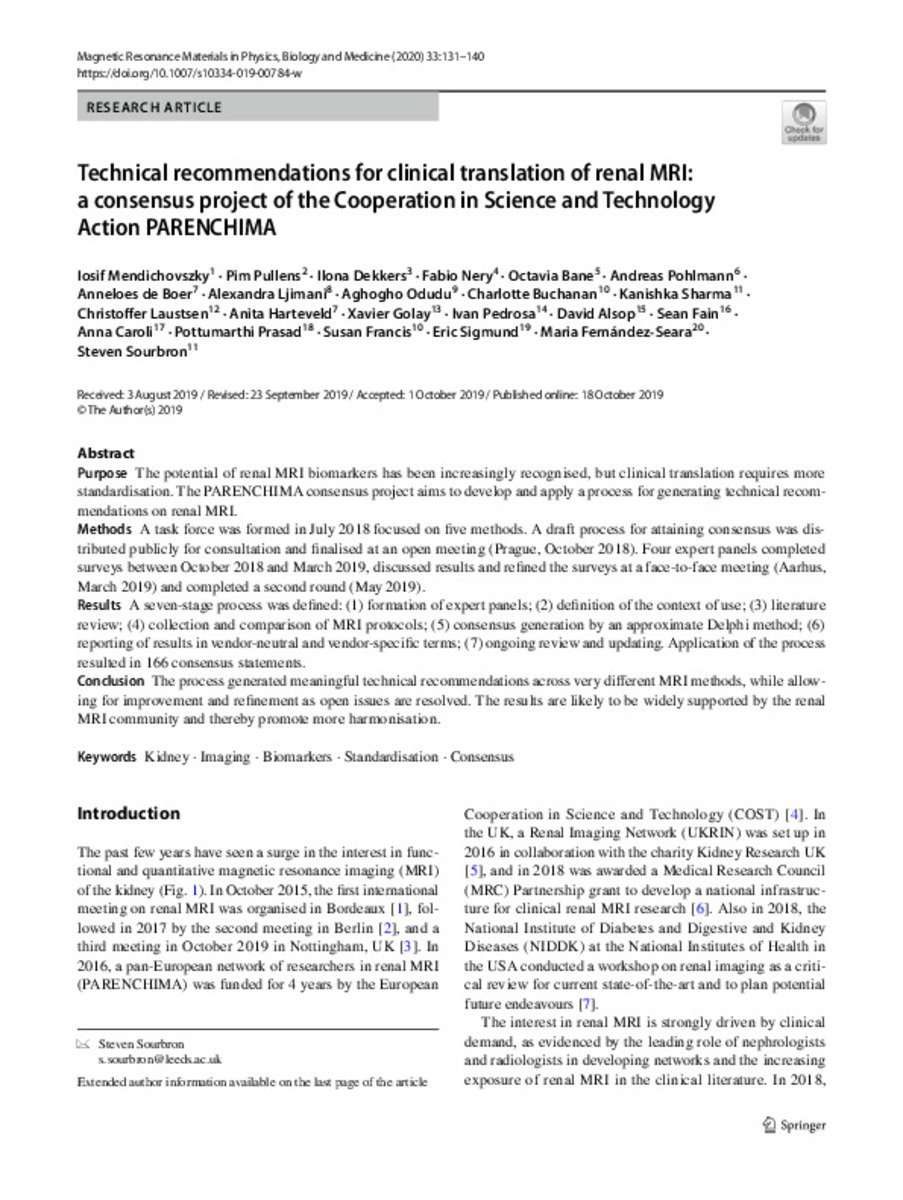Technical recommendations for clinical translation of renal MRI: a consensus project of the Cooperation in Science and Technology Action PARENCHIMA
Keywords:
Kidney
Imaging
Biomarkers
Standardisation
Consensus
Note:
This article is distributed under the terms of the Creative Commons Attribution 4.0 International License (http://creativeco
mmons.org/licenses/by/4.0/), which permits unrestricted use, distribution, and reproduction in any medium, provided you give appropriate
credit to the original author(s) and the source, provide a link to the
Creative Commons license, and indicate if changes were made.
Citation:
Mendichovszky, I.A. (Iosif A.); Pullens, P. (Pim); Dekkers, I. (Ilona); et al. "Technical recommendations for clinical translation of renal MRI: a consensus project of the Cooperation in Science and Technology Action PARENCHIMA". Magnetic Resonance Materials in Physics, Biology and Medicine. 33 (1), 2020, 131 - 140
Statistics and impact
0 citas en

Items in Dadun are protected by copyright, with all rights reserved, unless otherwise indicated.








